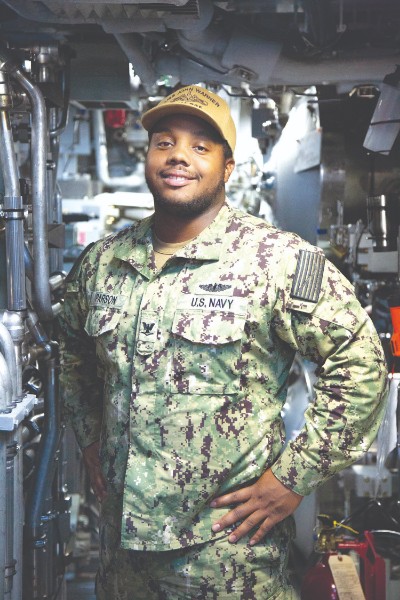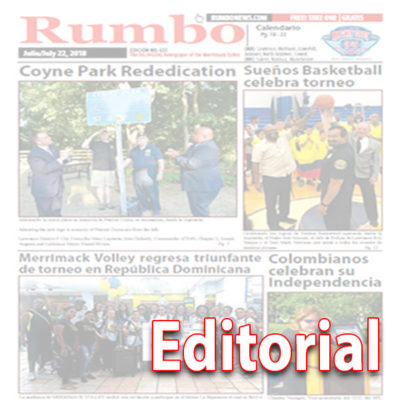
By Rick Burke, Navy Office of Community Outreach Photo by Senior Chief Mass Communication Specialist Gary Ward
NORFOLK, Va. – A 2014 Groton Dunstable High School graduate and Lowell, Massachusetts, native is serving in the U.S. Navy aboard USS John Warner, one of the U.S. Navy’s fast-attack submarines.
Petty Officer 3rd Class Eric Parson is a machinist’s mate (weapons) aboard the Norfolk-based submarine, one of only 16 Virginia-class fast-attack submarines in the Navy’s fleet.
A Navy machinist’s mate (weapons) is responsible for anything mechanical aboard the submarine as well as small arms and ordnance.
“I enjoy working in my division, I get along well with the other sailors,” Parson said. “I also like working with guns and force protection gear.”
Parson credits success in the Navy to many of the lessons learned in Lowell.
“My dad always told me that anyone can be more talented but everyone can out work you, and this applies directly as I do my best every day in the Navy,” Parson said.
With a crew of 130, this submarine is 377 feet long and displaces approximately 7,800 tons. John Warner’s nuclear-powered propulsion system helps push the submarine through the water at more than 25 mph and to depths greater than 800 feet.
A key element of the Navy’s mission is tied to the fact that America is a maritime nation, according to Navy officials, and the nation’s prosperity is tied to the ability to operate freely on the world’s oceans. More than 70 percent of the Earth’s surface is covered by water; 80 percent of the world’s population lives close to a coast; and 90 percent of all global trade by volume travels by sea.
“Our submarines continue to provide access with influence,” said Vice Adm. Chas Richard, Commander, Submarine Forces. “Our elite force is charged by our nation with exploiting unique undersea advantages to provide the United States influence, especially far forward where other forces cannot complete the mission, and where persistent undersea concealment provides unique access. We use that access and undersea concealment to provide unique intelligence, surveillance, and reconnaissance in support of national interests, and, if necessary, we are ready to use our undersea advantage to conduct strike warfare ashore, conduct theater and unit-level anti-submarine and anti-surface warfare, and perform other missions such as employing special forces.”
USS John Warner returned from an overseas deployment in July, which included combat operations in April, launching Tomahawk cruise missiles in targeted strikes against Syrian military facilities.
During this maiden deployment, sailors sailed more than 30,000 nautical miles and conducted port visits in Greece, Scotland, Spain and the United Kingdom. The crew also sailed above the Arctic Circle.
“Being the commanding officer of one of our nation’s submarines is the honor of a lifetime,” said Cmdr. Will Wiley, commanding officer of John Warner. “I come to work every day with a smile on my face because of the outstanding men and women I have the opportunity to serve with on USS John Warner who all volunteered to keep our country safe.”
As a member of one of the U.S. Navy’s most relied upon assets, Parson and his fellow submariners know they are part of a legacy that will last beyond their lifetimes, one that will provide a critical component of the Navy the nation needs.
“Working on a sub, I appreciate the bond that we all have,” Parson said. “Everyone becomes like a family.”
Though there are many ways for sailors to earn distinction in their command, community, and career, Parson is most proud of receiving both his submarine warfare qualification and Navy and Marine Corps Achievement Medal after his last deployment.
“Getting my warfare device took about a year of studying and hard work,” Parson said. “It represents the fact that shipmates can depend on me when it’s important.”
Submariners are some of the most highly-trained and skilled sailors in the Navy. The training programs are highly technical to ensure each crewmember is able to operate, maintain and repair every system and piece of equipment on the submarine.
“Serving in the Navy means being a part of something bigger than myself,” Parson added. “There are hard days but with the close relationships and great mentorship, I believe that I’m doing something meaningful.”
With only 130 elite sailors assigned, submarine crews build strong fellowship, are highly motivated and quickly adapt to changing conditions. A career as a submariner is a life of specialized work, unique missions and some of the most advanced training in the Navy.



